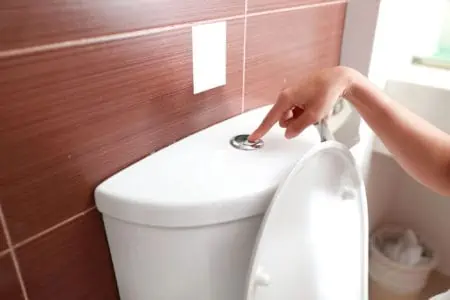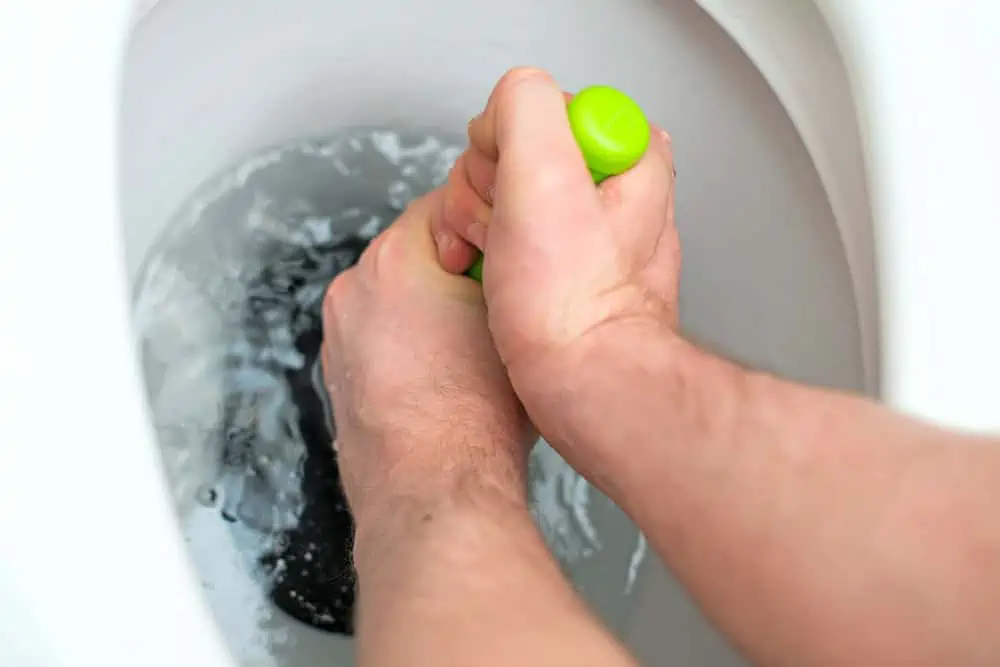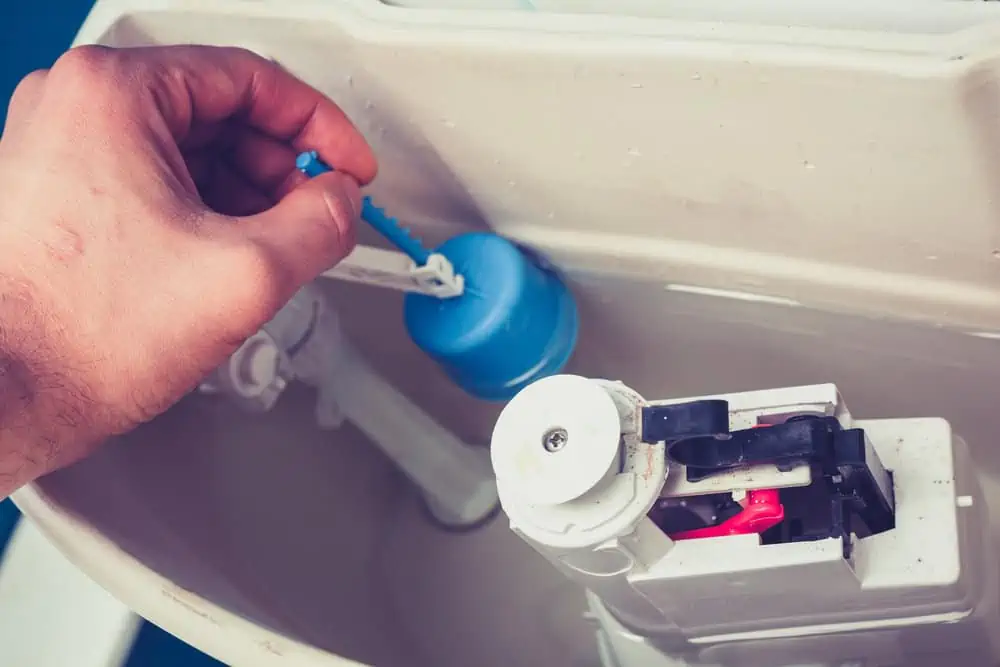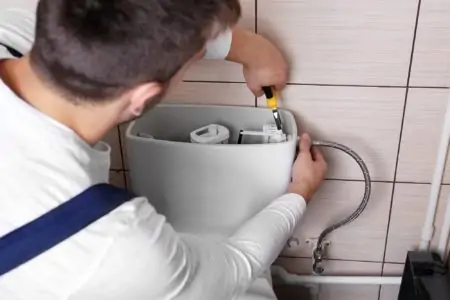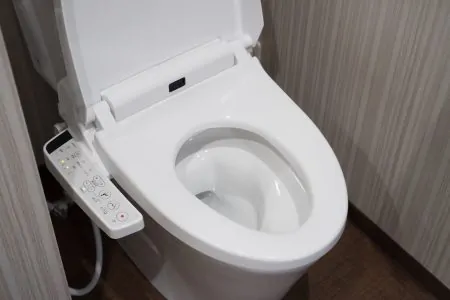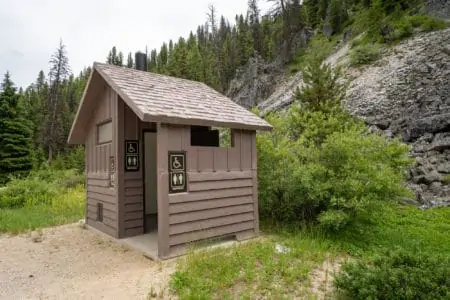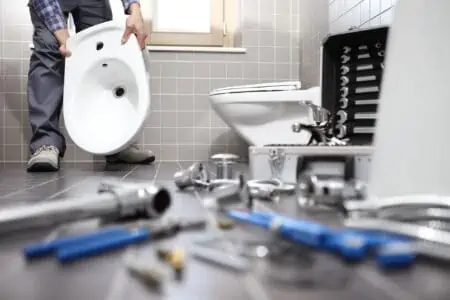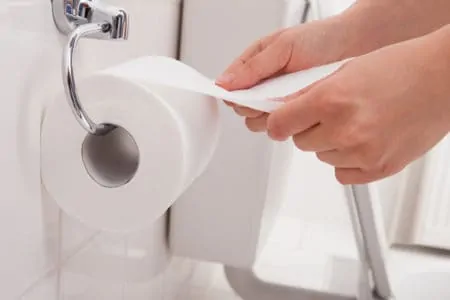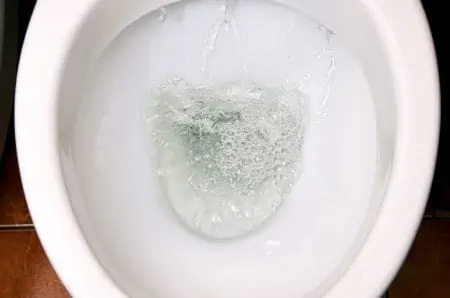Everybody dreads that moment when you pull the flush lever, and nothing happens. The waste sits in the toilet bowl, and the water fails to wash it down the drain. At this point, you ask, “why is my toilet not flushing?”
We highlight the potential problems with your toilet and show you how to fix a toilet that won’t flush.
Key Takeaways
- Common toilet flushing problems include a faulty fill valve, low water levels, clogged pipes, or a malfunctioning flapper.
- To fix a toilet that won’t flush, first check the lift chain, flapper, and fill valve for issues and adjust or replace them as needed.
- If the problem persists, unclog the inlet holes with a cleaning agent or vinegar, and inspect the overflow tube and drain line for any cracks or blockages.
- Performing these simple troubleshooting steps can save you money on calling a plumber and help you fix your toilet quickly and efficiently.
Why Won’t My Toilet Flush?
You press the push button, and nothing happens. The water swirls but won’t flush, and the waste comes back. Toilet flushing problems are more common than you might think, and luckily the solutions are simple too.
Let’s take a look at the rogue’s gallery of common problems:
Empty Toilet Tank
You pull the flush handle, and no water flows from the tank to the bowl. Lift the tank’s lid to see what’s going on, and there’s no water in the tank!
The Problem
The fill valve allows the water to flow when you flush the toilet. The flapper descends onto the hole as it empties and stops the water. At this point, the fill valve opens, and water floods back into the tank.
Once it reaches the fill level, the valve cuts out, and the tank is ready to be flushed again. If this doesn’t happen, there is a fault with your flapper, lift chain, and fill valve. It could also be an issue with the water supply valve.
How to Fix It
Check the length of the lift chain. If it’s too slack, the flapper won’t lift and flush, and too tight means it won’t close. If that happens, your toilet continuously runs. It also means that the fill valve cannot operate as it should.
You can buy chain and flapper kits, like this American Standard model, at low prices online. They are easy to replace, and you can adjust the chains to get the correct length.
Your tank could be empty because the supply valve is shut off. Sometimes it gets knocked during heavy cleaning, or you forget to turn it back on after toilet maintenance.
Damaged Flapper
A functioning flapper is crucial for your toilet to work correctly. They are made from rubber, which perishes over time, and can malfunction to scupper your toilet’s efficiency.
The Problem
Rubber crystalizes under prolonged contact with water. It becomes brittle as the mineral deposits coat the surface and harden. Eventually, bits snap off, and the flapper fails to seal.
How to Fix It
Flappers and chains are cheap, so it isn’t worth trying to repair the damaged old ones. Simply order a new model, like this Toto Value flapper and chain, and swap it with the damaged one.
You will need to drain the water tank, so isolate the water supply first. Then, flush the toilet until the tank is empty. Next, lift the lid and unclip the lift chain from the flush arm.
Unclip the flapper from the fill valve and lift it free. Reverse the process when attaching the new one, and then turn the water back on to refill the tank.
Top Tip
Make a note of which hole in the flush lever the chain was connected to. You will need to clip the new chain in the same position.
Disconnected Lift Chain
When the lift chain disconnects, the flapper doesn’t work, and the toilet won’t flush. Chains can also become stretched or rust, causing the links to fail.
The Problem
The lift chain has unclipped from the top of the flapper and is swinging free. It could also have stretched, making it too slack to work properly.
How to Fix It
The first thing to do is reclip the chain to the flapper. You don’t need to drain the water to do this. You will need to order a new chain, like this Fluidmaster Universal chain, if the chain is busted.
If the chain is too slack, remove links until it is taught but not overtightened. Test the flush to see if the flapper lifts and shuts correctly.
Top Tip
Chains are inexpensive, so replace it if your old one shows signs of wear and tear.
Clogged Toilet
Sometimes the issue is not the flushing mechanism but the toilet bowl. If the bowl is blocked, the waste matter won’t drain away when you flush. You also run the risk of flooding your bathroom if the bowl overflows.
The Problem
A large mass of waste matter has become wedged in the toilet bowl. It won’t flush away, and nothing seems to shift it.
How to Fix It
There are a couple of ways to deal with a blocked toilet bowl. The first is to wait and let gravity take its course. The matter will disintegrate over time and eventually fall down the drain.
This is the slowest method and could take several days. Not ideal if you only have one toilet and the family is bursting for a wee.
The second way is to plunge the blockage with a plunger like this Clorox to force the waste material down the drain.
The third method involves using a drain snake, like this Omont Clog Remover. It feeds along the waste line, dislodging the blockage. It is an ideal tool for clogs just out of reach, lodged further down the pipe.
The final technique is to fill a five-gallon bucket with hot water and pour it down the toilet from height. The force of the water should break up the mass and push it down the drain.
Clogged Inlet Holes
The inlet holes are where the water enters the bowl when you flush the handle. These holes are small and can easily become clogged.
The Problem
In hard water areas, mineral deposits are common. When scaling occurs, it coats the inlet holes and clogs them. If that happens, water flow is restricted, and your toilet fails to flush effectively.
How to Fix It
The easiest way to unclog inlet holes is to use a cleaning agent like CLR Pro. It eats limescale and dissolves mineral deposits to open your inlet holes.
If you prefer a more natural approach, you could always use white vinegar and water. Vinegar is a natural acid that strips away layers of limescale and is kind to the environment.
Mix vinegar with water into a spray bottle and apply it liberally to the inside of the bowl, including the inlet holes. Wait 20 minutes while the solution gets to work, and then flush the toilet.
Cracked Overflow Tube
The overflow tube sits inside the toilet tank (as part of the fill valve) and removes excess water if the float is incorrectly set. As the water rises, it spills into the overflow tube and is carried away. It prevents your tank from overfilling.
The Problem
If the overflow tube is cracked, it takes water from the tank that you need to create the flush. The tank never reaches optimum levels, and the amount of water coming through the inlet holes reduces.
How to Fix It
The answer to this issue is a new fill valve. You can purchase them from sites like Amazon or your local hardware store. This Fluidmaster is an excellent example of a fill valve at a great price.
They unscrew from the tank’s base, making it easy to swap them over.
Fill Valve Problems
The fill valve regulates water levels inside the tank. It lets water out when flushing and water in when the tank refills. If it fails, your toilet won’t flush at all.
The Problem
The most common fill valve issue is when the float is incorrectly set. As the water rises or falls, the float engages the refill valve, causing the tank to half fill or overfill.
Another issue is the ballcock or float. If the arm attached to the float is bent, the toilet fails or barely flushes.
Other common issues include incorrect lift chain lengths and damaged flappers. These components are located outside the fill valve but are integral to the flushing function.
How to Fix It
You can adjust the height of the fill valve float by twisting the small plastic screw. One way lifts the float, and the other lowers it. You can also straighten the bent float arm using pliers.
If the lift chain is too long or short, add or remove chain links to set the correct height. Replace the flapper if it looks past its best.
Drain Line Problems
If you examine the toilet bowl and it’s not clogged, you may have an issue with the drain line. One great way of spotting this problem is to run the faucet and watch as the sink drains. It is probably a clogged drain line if the water doesn’t empty completely.
The Problem
There is a blockage in the drain line if your toilet flushes, but the water backs up into the bowl. If the clog is too far down to reach by hand, it may not be apparent. This Populo Electric Drain Snake is handy because it feeds into the waste pipe and rotates to clear the blockage.
You can also use a chemical drain unblocker, like this Instant Power Drain Cleaner. Simply pour the recommended amount into the toilet bowl and wait for the allocated time frame. Then use a plunger to force water down the drain line to shift the waste matter.
You may not completely remove the problem on the first attempt. The blockage might not have dropped all the way into the sewer, so repeat the process using a combination of the methods.
Why Is My Toilet Running but Not Flushing?
The culprit is likely to be the fill valve, lift chain, or the flapper. The three elements are connected to create a healthy flush. If the flapper is stuck, that running water sound could be the overflow taking excess water away.
There could also be water flowing into the toilet bowl, leaving the tank semi-full. Again, this is also down to the flapper. When the chain is set incorrectly, it fails to lift the flapper when the flush lever gets pulled.
If the chain is too slack, the flapper won’t lift. You could also have an issue with the water supply valve. If it is partially closed, it affects the water entering the toilet tank, only partially filling it.
Flushed With Success
As you can see, there are several reasons why your toilet fails to flush. Given that the functional components sit inside the toilet tank, there’s a good chance the problem lies there. Start with the obvious and then work through to the least likely culprit, and you should cover all the bases.
Sorting out the problem yourself stands you in good stead for future issues and saves you money on calling a plumber. So, the next time you scream, “my toilet won’t flush,” roll up your sleeves and get to work.
